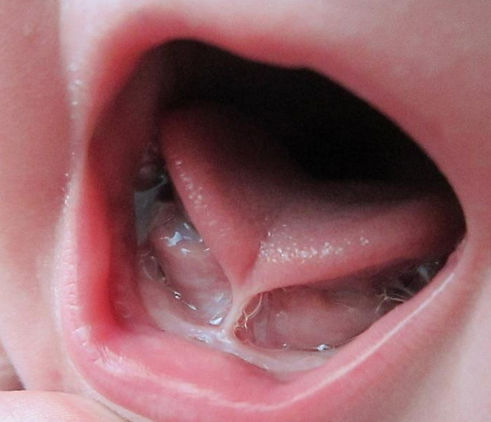
Tongue
Ties

Home Visits
and Virtual
Options
Available
Tongue Tie Support
If you’ve landed on this page, chances are you have questions or concerns about possible tongue restrictions—and you're not alone. Many of the families I work with come feeling confused by conflicting advice and overwhelmed by the process. That’s exactly why this topic deserves a page of its own: to offer clarity, support, and a functional approach to understanding tongue ties.
What Can a Tongue Restriction Affect?
Tongue ties aren’t just about feeding—they can impact
oral function, breathing, sleep and quality of life at every age. Here’s how:
In Infants:
-
Difficulty latching or staying latched at breast or bottle
-
Prolonged or frequent feedings
-
Clicking or leaking while feeding
-
Gassiness, reflux, or colic symptoms
-
Poor weight gain or early weaning
-
Mouth breathing during sleep
-
Snoring or noisy breathing
-
Fatigue during feeding
In Children:
-
Speech articulation challenges
-
Difficulty chewing and swallowing
-
Picky eating or food aversions
-
Mouth breathing or open mouth posture
-
Snoring, restless sleep, or bedwetting
-
Tongue thrust or improper oral habits
-
Delays in orthodontic or airway development
In Adults:
-
TMJ pain, clenching or grinding
-
Headaches or facial tension
-
Snoring or sleep-disordered breathing
-
Difficulty speaking for long periods
-
Neck and shoulder tension
-
Gag reflex sensitivity
-
Challenges with oral intimacy or kissing
Why Is There So Much Confusion About Tongue Ties?
It’s common for parents (and adults) to receive conflicting feedback from different providers:
-
One physician may say there’s no tongue tie, while an ENT or dentist recommends treatment.
-
A provider may do a quick visual exam and say everything looks fine—without assessing function.
-
Some treat based only on appearance, while others ignore how it affects breathing, feeding, or sleep.
A quick look in the mouth is not enough!
A thorough evaluation should include a functional assessment from a provider who understands feeding and oral development—such as a lactation consultant or myofunctional therapist. It's not just about what the tissue looks like—it’s about how the tongue functions in daily life.
What About After the Procedure?
Even when families work with knowledgeable providers, many still feel lost and unsupported after a tongue tie release. Some common concerns I hear:
-
“Am I doing the stretches correctly?”
-
“Is this what healing is supposed to look like?”
-
“How do I know if it worked?”
-
“I’m scared I’ll mess this up.”
I work with many families on post-procedure care, offering:
-
Guidance with stretches and exercises (if applicable)
-
Monitoring of healing
-
Support with functional progress
-
Reassurance and emotional support during a vulnerable time
-
Ongoing collaboration with your release provider, if needed
The procedure is just one piece—aftercare is where the true healing happens.
You don’t have to go through it alone. I’m here to walk with you every step of the way.